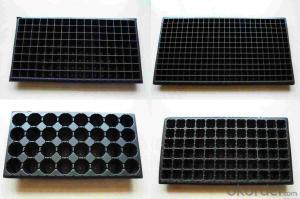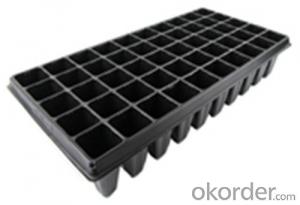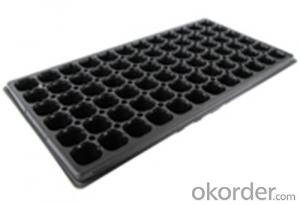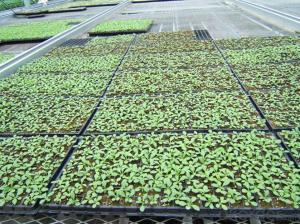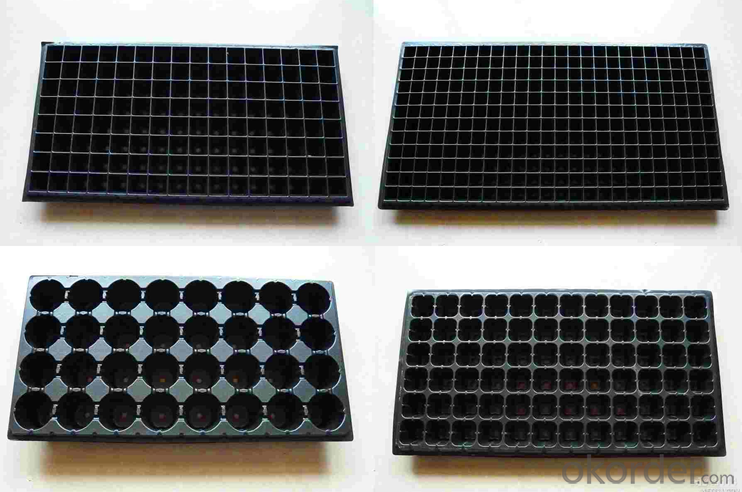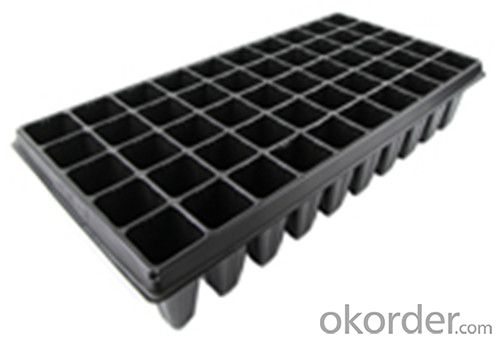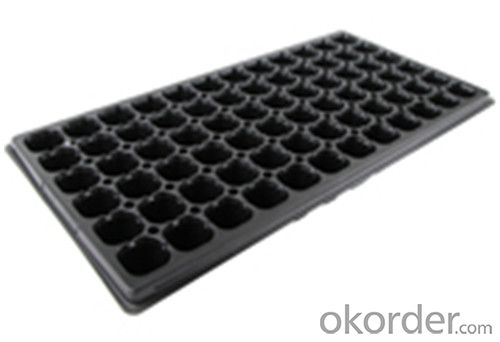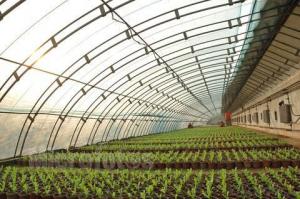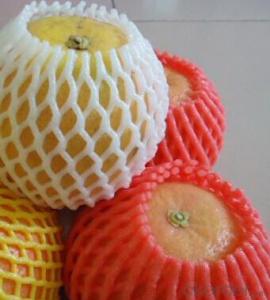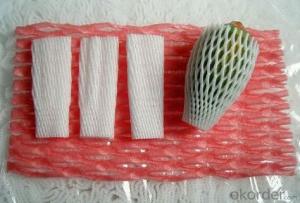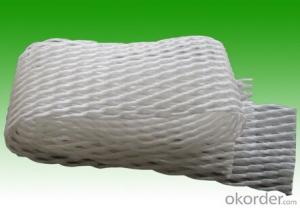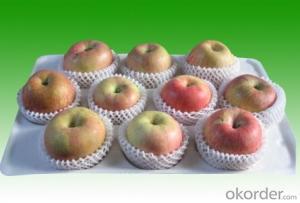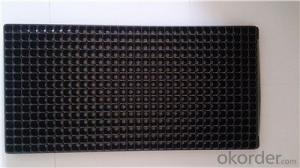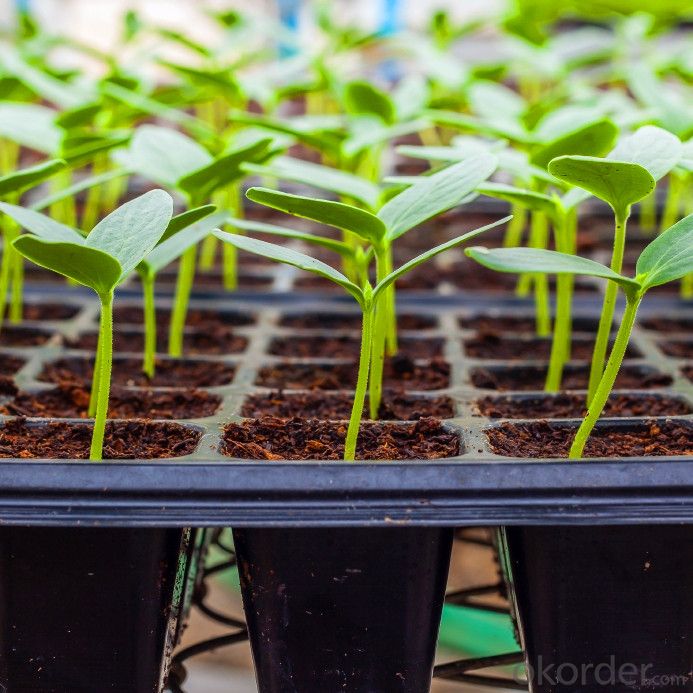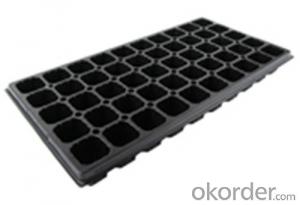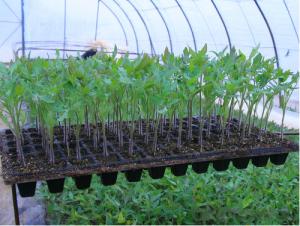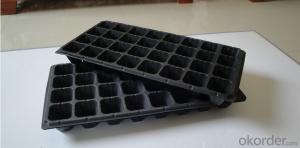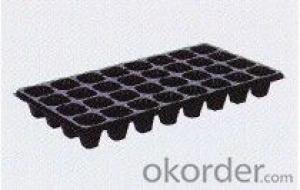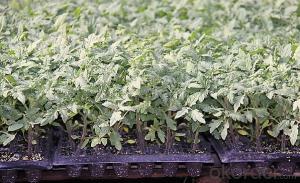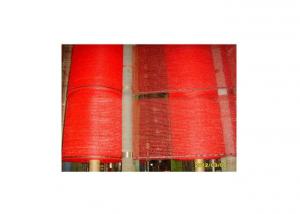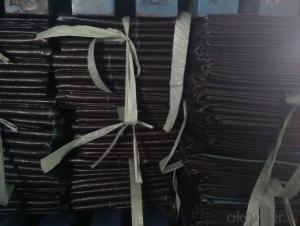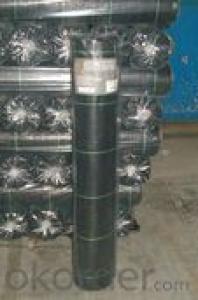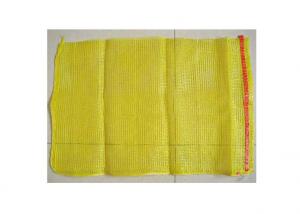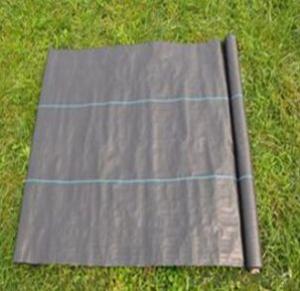seedling planting plastic seeding tray for greenhouse
- Loading Port:
- China main port
- Payment Terms:
- TT OR LC
- Min Order Qty:
- 1000 pc
- Supply Capability:
- 10000000 pc/month
OKorder Service Pledge
OKorder Financial Service
You Might Also Like
Structure of the seed tray: · Top quality and competitive price. · Variety design and good appearance. · Easy to use, and remove. · Durable and reusable. · Eco-Friendly.
Advantages: · Top quality and competitive price. · Variety design and good appearance. · Easy to use, and remove. · Durable and reusable. · Eco-Friendly.
Application: · Ideal for Starting seeds and Transplanting Seedling. · Suitable for both manual and automatic planting. · Suitable for Propagating Vegetables, Flowers and other plant from seed · in green-house or indoors.
Description Main Features of the seed tray: · Ideal for Starting seeds and Transplanting Seedling. · Suitable for both manual and automatic planting. · Suitable for Propagating Vegetables, Flowers and other plant from seed in green-house or indoors. Using time: · thickness of 0.5mm can be used 1 to 2 times. · thickness of 0.6mm can be used 3 to 4 times. · thickness of 0.7mm can be used 5 to 6 times. · thickness of 0.8mm can be used 7 to 8 times. · thickness of 0.9mm can be used 8 to 9 times. · thickness of 1.0mm can be used 8 to 10 times. Thickness vs. Weight: · Thickness of trays are from 0.5mm to 1.0mm. · 1.0mm: 155g±5g; 100pcs/ctn. · 0.9mm: 140g±5g; 120pcs/ctn. · 0.7mm: 110g±5g; 150pcs/ctn. · 0.6mm: 95g±5g; 180pcs/ctn. · 0.5mm: 80g±5g; 200pcs/ctn.
Seed Tray Specification: Materialps/pvcThickness0.5mm-1.5mm, standard:1mmWeight80g(±5)g-230g(±5)g, Standard weight:155g(±5)gSizelength:490mm-540mm, width:190mm-345mm,depth:25mm-150mm Standard:54mmX28mmCell count18-512Packagein cartonUsing time8-10 times
FAQ: Q:How Can I Get A Sample? A:You can get samples by communicate with our export sales. Q:How Long Is Delivery? A:Delivery time will be 7-25 days according to order quantity. Q:What Is The MOQ? A:Our MOQ is 1*20FT container quantity, allow to mix several items. Q:What Is Our Normal Payments Terms? A:Our normal payment terms now is T/T, L/C or Western Union,Papal. Q:How Do I Order Your Products? A:You can check our website for any items you interest and you can also get communication with our export sales and order for it accordingly. Q:What Kinds Of Material We Use In Our Product? A:Our plastic flower pots use material such as PP polymer or PE polymer.
|
- Q: What are some ground cover options for coastal gardens?
- Some ground cover options for coastal gardens include beach grass, ice plant, creeping thyme, seaside daisy, and sea lavender. These plants are well-suited for the coastal environment due to their tolerance for salt spray, sandy soil, and strong winds.
- Q: Which is produced by living organisms and which is synthetic: plastic or styrofoam?
- Polystyrene foam (Styrofoam) is a plastic produced from petroleum sources. It carries the recycle symbol 6. It usually is not recycled and ends up in landfills. Plastic is a general category that includes polystrene foam. Neither various plastics nor polystyrene are produced by living organisms...all are synthetic materials produced by humans (who are living oganisms - did I just contradict myself?).
- Q: How does agricultural plastic affect crop photosynthesis and respiration?
- Agricultural plastic can have both positive and negative effects on crop photosynthesis and respiration. On one hand, using plastic mulch or tunnels can increase crop productivity by enhancing light availability, reducing weed competition, and conserving moisture. This can lead to improved photosynthesis and greater crop yields. On the other hand, improper management and disposal of plastic can harm the environment and contribute to greenhouse gas emissions. Plastic waste can block sunlight, hinder gas exchange, and create anaerobic conditions, negatively affecting photosynthesis and respiration. Therefore, responsible use and proper disposal of agricultural plastic is crucial to minimize its negative impact on crop physiology.
- Q: I want to get custom plastic parts molded. Where can I get it or how can I do it myself?
- China is usually pretty cheap. That is were everyone goes.
- Q: What are the different types of plastic clips used in horticulture?
- There are several types of plastic clips commonly used in horticulture, including plant clips, trellis clips, and twist ties. Plant clips are used to secure plants to stakes or trellises, providing support as they grow. Trellis clips are specifically designed to attach plants to trellises or wire frames, ensuring they remain upright and properly trained. Twist ties are flexible plastic strips with a wire core, often used to secure plants to stakes or to bundle and organize garden materials. These plastic clips are essential tools in horticulture, helping to promote healthy plant growth and organization in gardens and nurseries.
- Q: What are some ground cover options for full sun?
- Some ground cover options for full sun include creeping thyme, sedum, creeping phlox, and moss rose.
- Q: Do nursery trays come with a humidity control dome?
- Some nursery trays may come with a humidity control dome, but it depends on the specific product and manufacturer. It is important to check the product description or contact the supplier to confirm if a humidity control dome is included.
- Q: Can agricultural plastic products be used for honey extraction?
- No, agricultural plastic products are not suitable for honey extraction.
- Q: Are there any ground cover plants that are drought-tolerant?
- Yes, there are several ground cover plants that are drought-tolerant. Examples include creeping thyme, sedum, ice plant, and yarrow. These plants have adaptations that allow them to survive and thrive in dry conditions with minimal water requirements.
- Q: Can agricultural plastic products be used for mushroom cultivation?
- Yes, agricultural plastic products can be used for mushroom cultivation. Plastic materials like polyethylene bags or sheets are commonly used in mushroom cultivation for creating an optimal growing environment, retaining humidity, and preventing contamination.
Send your message to us
seedling planting plastic seeding tray for greenhouse
- Loading Port:
- China main port
- Payment Terms:
- TT OR LC
- Min Order Qty:
- 1000 pc
- Supply Capability:
- 10000000 pc/month
OKorder Service Pledge
OKorder Financial Service
Similar products
Hot products
Hot Searches
Related keywords
